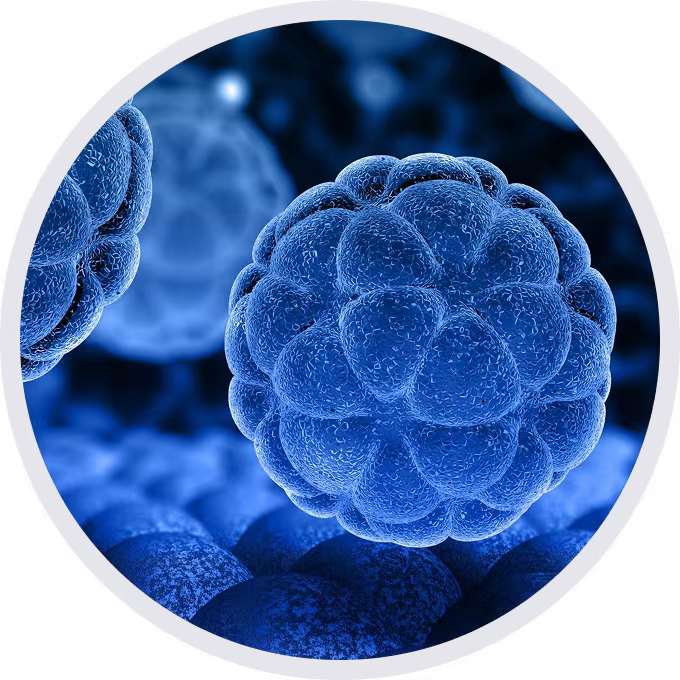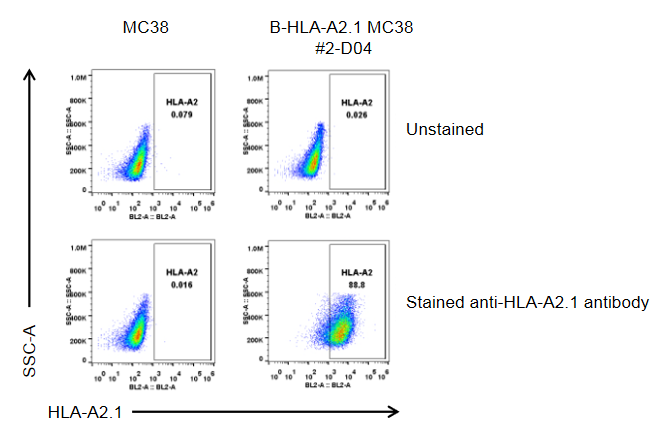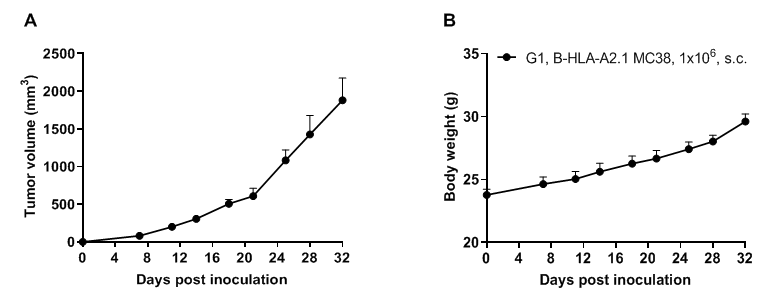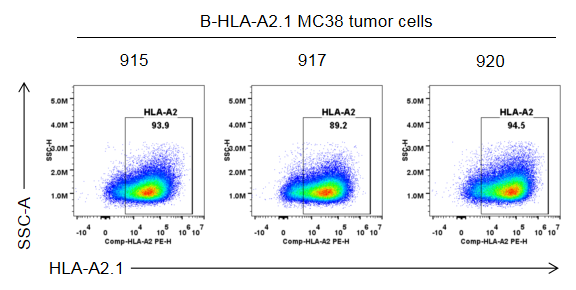


• 322407

| Product name | B-HLA-A2.1 MC38 |
|---|---|
| Catalog number | 322407 |
| Strain background | C57BL/6 |
| Aliases | IMD43, AMYLD6, MHC1D4; HLAA |
| Tissue | Colon |
| Disease | Colon carcinoma |
| Species | Mouse |
| Application | B-HLA-A2.1 MC38 tumor models can be used for preclinical evaluation of cancer vaccines. |

HLA-A2.1 expression analysis in B-HLA-A2.1 MC38 by flow cytometry. Single cell suspensions from wild-type MC38 and B-HLA-A2.1 MC38 #2-D04 cultures were detected with species-specific anti-HLA-A2.1 antibody (Biolegend, 343306). Human HLA-A2.1 was detected on the surface of B-HLA-A2.1 MC38 but not wild-type MC38.

Subcutaneous tumor growth of B-HLA-A2.1 MC38 cells. B-HLA-A2.1 MC38 cells (1×106) were subcutaneously implanted into B-HLA-A2.1 mice (male, 7-week-old, n=7). Tumor volume and body weight were measured twice a week. (A) Average tumor volume. (B) Body weight. Volume was expressed in mm3 using the formula: V=0.5 × long diameter × short diameter2. Results indicate that B-HLA-A2.1 MC38 cells were able to establish tumors in vivo and can be used for efficacy studies. Values are expressed as mean ± SEM.

HLA-A2.1 expression evaluated in B-HLA-A2.1 MC38 tumor cells by flow cytometry. B-HLA-A2.1 MC38 cells were subcutaneously transplanted into B-HLA-A2.1 mice (male, 7-week-old, n=7). Upon conclusion of the experiment, tumor cells were harvested and assessed with species-specific anti-HLA-A2.1 antibody (Biolegend, 343306). Human HLA-A2.1 was highly expressed on the surface of tumor cells. Therefore, B-HLA-A2.1 MC38 cells can be used for in vivo efficacy studies evaluating cancer vaccines.